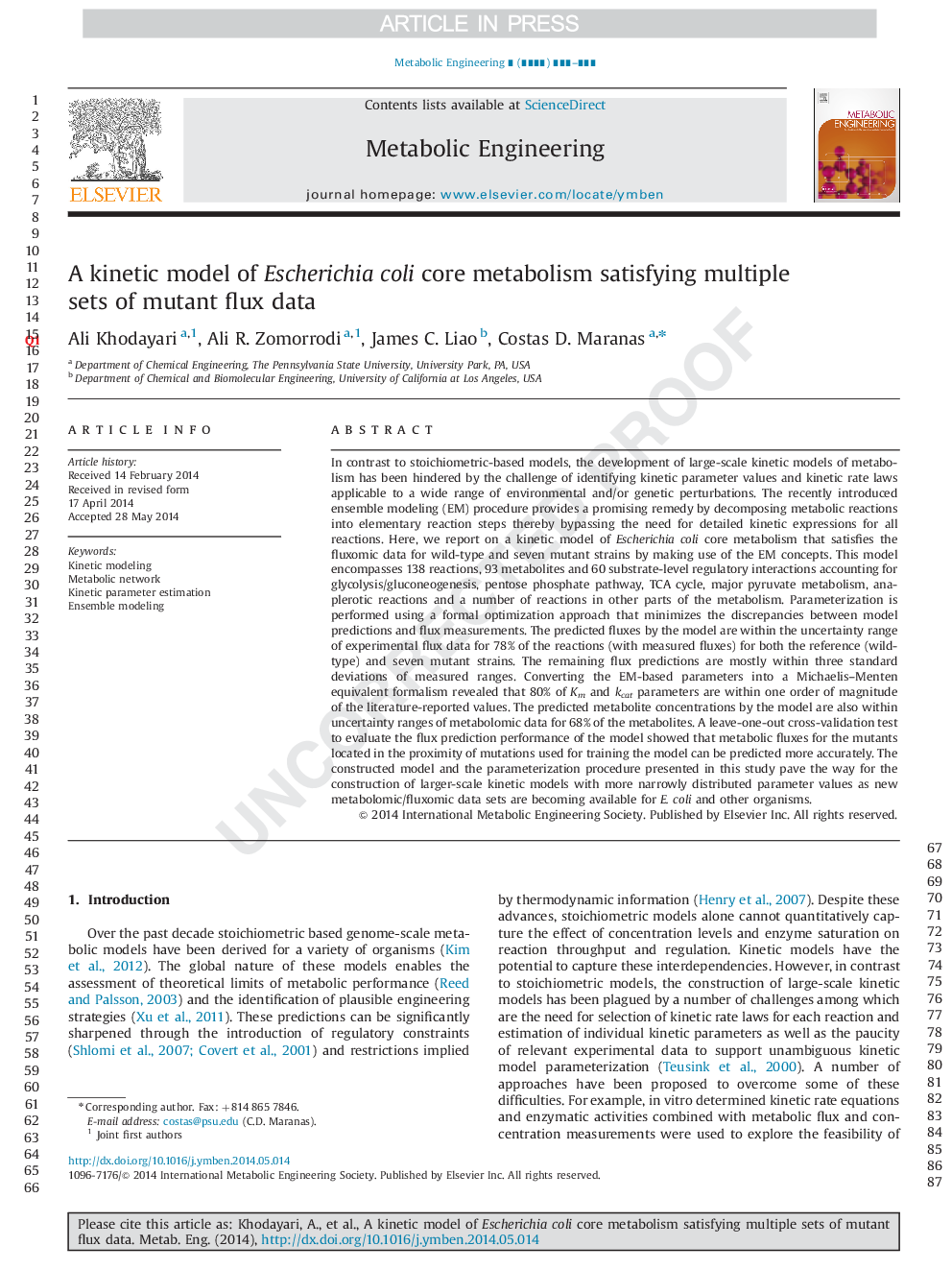| Article ID | Journal | Published Year | Pages | File Type |
|---|---|---|---|---|
| 6494556 | Metabolic Engineering | 2014 | 12 Pages |
Abstract
In contrast to stoichiometric-based models, the development of large-scale kinetic models of metabolism has been hindered by the challenge of identifying kinetic parameter values and kinetic rate laws applicable to a wide range of environmental and/or genetic perturbations. The recently introduced ensemble modeling (EM) procedure provides a promising remedy to address these challenges by decomposing metabolic reactions into elementary reaction steps and incorporating all phenotypic observations, upon perturbation, in its model parameterization scheme. Here, we present a kinetic model of Escherichia coli core metabolism that satisfies the fluxomic data for wild-type and seven mutant strains by making use of the EM concepts. This model encompasses 138 reactions, 93 metabolites and 60 substrate-level regulatory interactions accounting for glycolysis/gluconeogenesis, pentose phosphate pathway, TCA cycle, major pyruvate metabolism, anaplerotic reactions and a number of reactions in other parts of the metabolism. Parameterization is performed using a formal optimization approach that minimizes the discrepancies between model predictions and flux measurements. The predicted fluxes by the model are within the uncertainty range of experimental flux data for 78% of the reactions (with measured fluxes) for both the wild-type and seven mutant strains. The remaining flux predictions are mostly within three standard deviations of reported ranges. Converting the EM-based parameters into a Michaelis-Menten equivalent formalism revealed that 35% of Km and 77% of kcat parameters are within uncertainty range of the literature-reported values. The predicted metabolite concentrations by the model are also within uncertainty ranges of metabolomic data for 68% of the metabolites. A leave-one-out cross-validation test to evaluate the flux prediction performance of the model showed that metabolic fluxes for the mutants located in the proximity of mutations used for training the model can be predicted more accurately. The constructed model and the parameterization procedure presented in this study pave the way for the construction of larger-scale kinetic models with more narrowly distributed parameter values as new metabolomic/fluxomic data sets are becoming available for E. coli and other organisms.
Related Topics
Physical Sciences and Engineering
Chemical Engineering
Bioengineering
Authors
Ali Khodayari, Ali R. Zomorrodi, James C. Liao, Costas D. Maranas,
